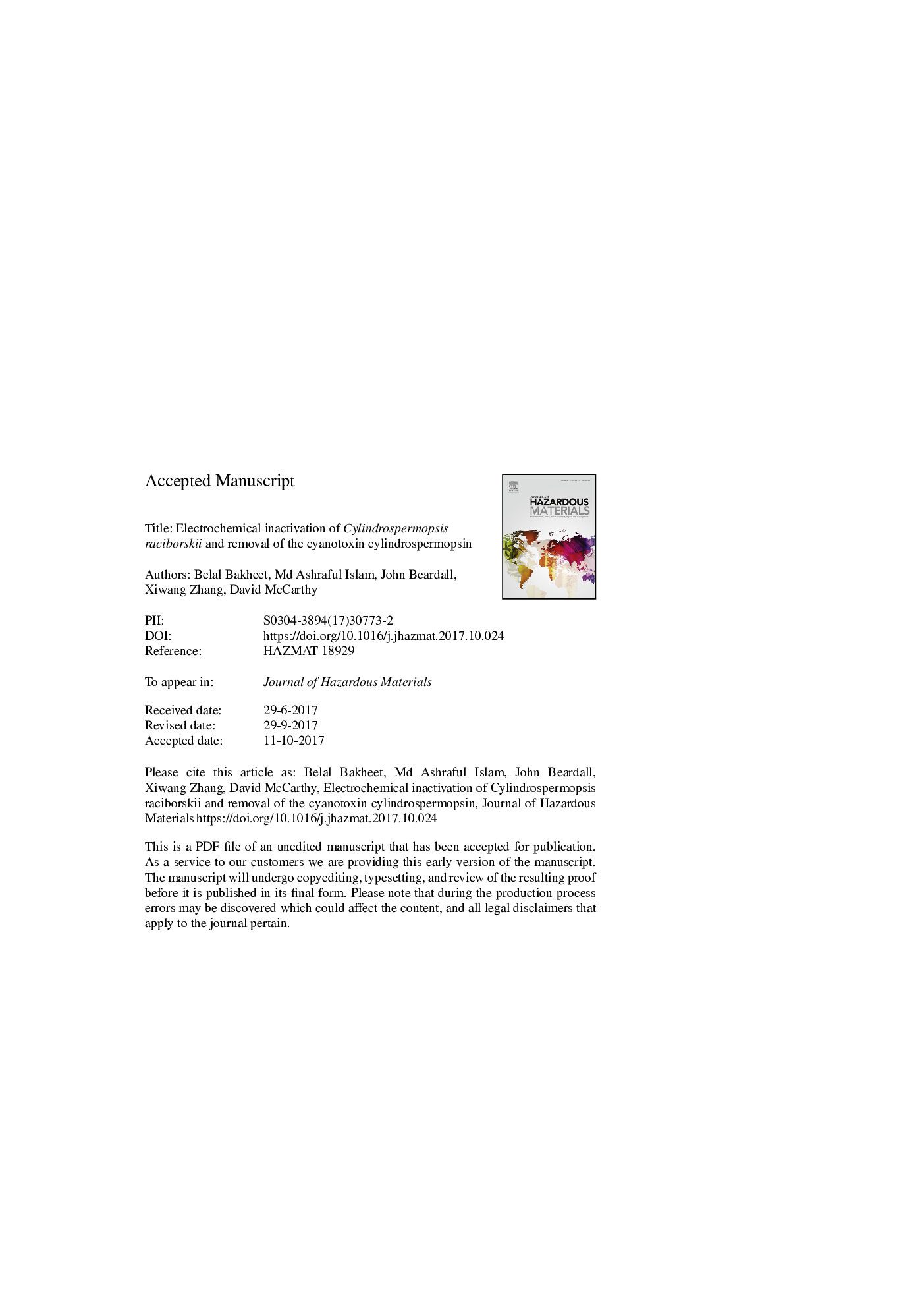| Article ID | Journal | Published Year | Pages | File Type |
|---|---|---|---|---|
| 4979048 | Journal of Hazardous Materials | 2018 | 22 Pages |
Abstract
Much attention has been paid to ways of removing toxic cyanobacteria and cyanotoxins from water prior to its use due to public health concerns. The efficacy of treating the toxic filamentous cyanobacterium Cylindrospermopsis raciborskii (C. raciborskii) by electrolysis with a boron-doped diamond (BDD) in Chloride-free solution was investigated. At optimum current, about 87 and 93% removal of cell density at 60 and 180 min and about 72 and 90% of Chl a, respectively. Additionally, a physiological test (FV/Fm) indicated that cells were completely inactivated in 45 min. Furthermore, initial total cylindrospermopsin concentration 1.83 μg/L was also degraded to below the detection limit ( < 0.05 μg/L) in 30 min. Hydroxyl radical (OH) played the major role in cell inactivation, however, Na2SO4 also played a minor role in algae removal due to the formation of SO4â and subsequently S2O82â by BDD electrode. The results of this study suggest that BDD electrochemical treatment of algae in Chloride-free water is feasible.
Keywords
Related Topics
Physical Sciences and Engineering
Chemical Engineering
Chemical Health and Safety
Authors
Belal Bakheet, Md Ashraful Islam, John Beardall, Xiwang Zhang, David McCarthy,
